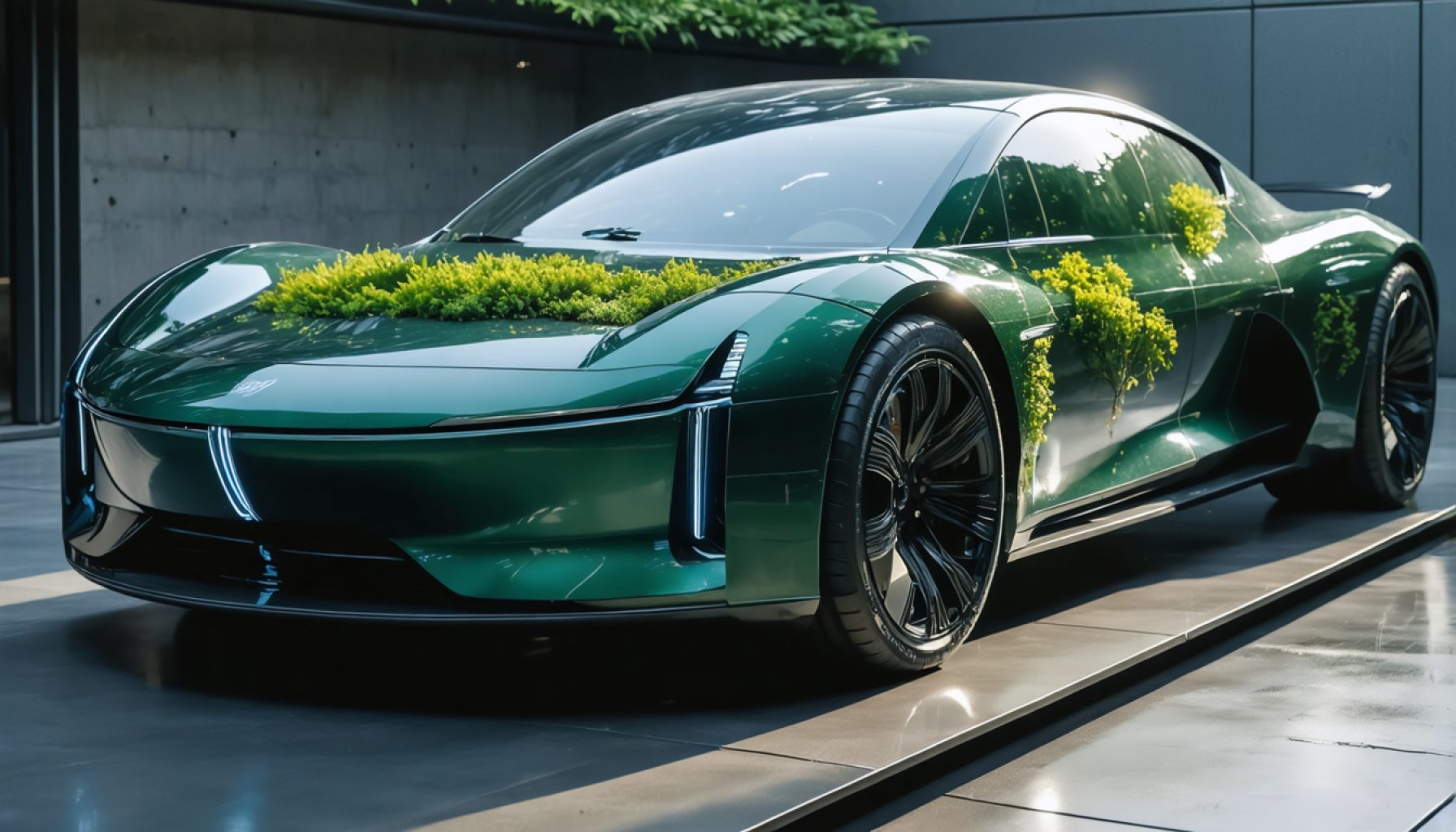
- Graphite is crucial for the EV industry, with global sales reaching 1.2 million in February 2025, driving high demand.
- China dominates 95% of the battery-grade graphite market and controls 75% of the global EV market, leaving Western countries behind.
- New tensions arise as the US and Europe introduce tariffs on vehicle imports, complicating supply chains.
- Biographite, sourced from forestry by-products, emerges as an eco-friendly, cost-effective graphite alternative, reducing carbon footprints.
- Biographite offers automakers local sourcing options, minimizing import dependencies and supply chain risks.
- The shift toward biographite aligns business with sustainability, critical for companies like GM and Volkswagen.
- The strategic push for domestic mineral production is crucial to mitigate geopolitical risks and reduce reliance on monopolistic control.
- Western nations are slowly pivoting towards regional empowerment and sustainable supply chains, driven by initiatives like the Inflation Reduction Act.
A silent but unmistakable revolution is sweeping through the corridors of the automotive industry, fueled by a single, pivotal substance: graphite. As electric vehicles (EVs) continue their relentless ascent—global sales surged to an impressive 1.2 million in February 2025 alone—the insatiable demand for this critical mineral is escalating tensions in the industrial sector.
Behind the scenes, China looms large over the graphite market. This Asian giant commands an overwhelming 95% of the world’s battery-grade graphite production and exerts control over nearly three-quarters of the global EV market. This dominance paints a picture of early strategic investment and an uncanny foresight, a vision that Western countries, by contrast, have been slow to grasp and emulate.
Amid these global dynamics, the United States and Europe find themselves playing catch-up. New trade tensions surfaced, underscored by recent proposals for hefty tariffs on vehicle imports, which could further tangle the supply chains. It’s a precarious dance, as Western automakers navigate hefty losses—Ford projects a staggering $5 billion loss in its EV division by 2025—partly due to the high costs of critical inputs compounded by intricate global supply chains.
Enter biographite, a beacon of innovation poised to upset the balance. This material emerges from the humble origins of forestry by-products, transforming low-cost, renewable materials into a high-performance graphite alternative. Its production is marked by low temperatures and carbon sequestration, promising not only to cut the carbon footprint significantly but also to offer a viable domestic supply solution.
Biographite turns traditional graphite production on its head, erasing the ecological toll of high-carbon processes. This innovation does not merely offer a sustainable alternative; it presents a cost-efficient avenue for automakers. By tapping into rich local resources, companies can slice through expensive import dependencies and diminish the risk of trade disruptions. The path to locally produced, carbon-negative battery materials is one of both financial prudence and environmental stewardship.
For automakers like General Motors and Volkswagen, increasingly pressured to balance surging EV demands with economic sustainability, biographite could be the breakthrough needed to align business objectives with ecological priorities. With local production, companies can regain control over their supply chains, bolstering resilience while slashing costs.
Yet, the promise of biographite extends beyond the automotive industry. It is part of a larger strategy to decouple critical mineral supply from monopolistic control and geopolitical risks. The need to foster domestic production capacities and support innovations like biographite is both strategic and urgent.
As nations contemplate the future of their EV initiatives, the lessons from China’s strategic foresight are clear: the key to enduring competitiveness lies not in protective tariffs, but in proactive investment in diversified, sustainable, and resilient supply chains. With initiatives like the Inflation Reduction Act in the US pushing for local sourcing and the EU’s strategic funding projects, the West is slowly pivoting toward a future where critical minerals are as much about regional empowerment as they are about technological prowess.
In this landscape of rapid development, biographite’s ascendancy serves as a testament to the potential unlocked by innovation—a greener, more autonomous future that’s fast becoming a reality.
Revolutionizing EVs with Biographite: The Next Big Leap in Sustainable Automotive Innovation
Understanding the Graphite Revolution
The growing popularity of electric vehicles (EVs) has sparked a transformative shift in the automotive industry, driven by an often-overlooked mineral: graphite. As EV sales soar globally, reaching 1.2 million units in February 2025 alone, graphite demand has surged, revealing a critical dependency in current battery technology. However, the industry is witnessing a new player, stepping in to reshape the landscape: biographite.
The Chinese Dominance and Global Implications
China currently monopolizes the graphite market, producing 95% of the world’s battery-grade graphite and commanding nearly 75% of the global EV market. Western nations, lagging in this strategic race, are experiencing trade tensions and potential economic setbacks. For instance, Ford predicts a $5 billion loss in its EV division by 2025, largely due to supply chain complexities and costly imports.
Biographite: Disrupting Traditional Graphite Production
Biographite is emerging as a sustainable successor to traditional graphite. Derived from forestry by-products through low-temperature processes, biographite offers a carbon-negative profile, dramatically reducing environmental impact. The production of biographite not only mitigates the carbon footprint but economically benefits automakers by reducing reliance on imports and cutting costs.
Key Benefits of Biographite
1. Environmental Sustainability: With a process that promotes carbon sequestration, biographite significantly lowers the ecological impact compared to conventional graphite.
2. Economic Efficiency: Localizing graphite production reduces dependency on volatile international supply chains, decreasing costs associated with imports.
3. Strategic Independence: Biographite empowers nations to decouple from China’s market dominance, bringing focus to regional production and innovation.
How To Embrace Biographite in the Automotive Industry
1. Invest in Local Production Facilities: Encourage investment in local biographite production to secure a steady supply chain and reduce geopolitical risks.
2. Foster Innovation: Support research and development efforts to enhance biographite production efficiency and applications.
3. Integrate Sustainable Practices: Collaborate with forestry and agricultural sectors to create a reliable biographite feedstock supply.
Real-World Use Cases and Predictions
Automakers like General Motors and Volkswagen could leverage biographite to satisfy growing EV demand, strike a balance between environmental goals, and economic targets. The shift towards biographite is supported by legislation such as the Inflation Reduction Act in the US, promoting local sourcing for critical minerals.
Industry Trends and Insights
The global market is witnessing a pivot toward sustainable and resilient supply chain strategies. Nations are investing in domestic production capacities, a move paralleling China’s foresight in early battery-grade graphite investments. This trend underscores the urgency to diversify critical mineral sources, ensuring long-term geopolitical and economic stability.
Challenges and Limitations
Despite its potential, biographite faces challenges like initial investment costs and scalability hurdles. However, with ongoing technological advancements and policy support, overcoming these obstacles seems feasible.
Conclusion and Actionable Recommendations
As the automotive industry navigates this transformative period, embracing biographite offers a path toward a greener, more independent future. For automakers and policymakers, strategic investment in biographite technology and infrastructure could yield substantial benefits. Engage in multi-sector collaborations and advocate for policies that bolster sustainable innovations.
Suggested Related Links
– [US Department of Energy](https://energy.gov) for resources and support on energy innovations and local production initiatives.
– [Volkswagen Group](https://volkswagen.com) to explore current EV initiatives and sustainability strategies.
By unlocking the potential of biographite, the automotive sector can achieve a harmonious blend of technological advancement and ecological responsibility, paving the way for a sustainable future.



